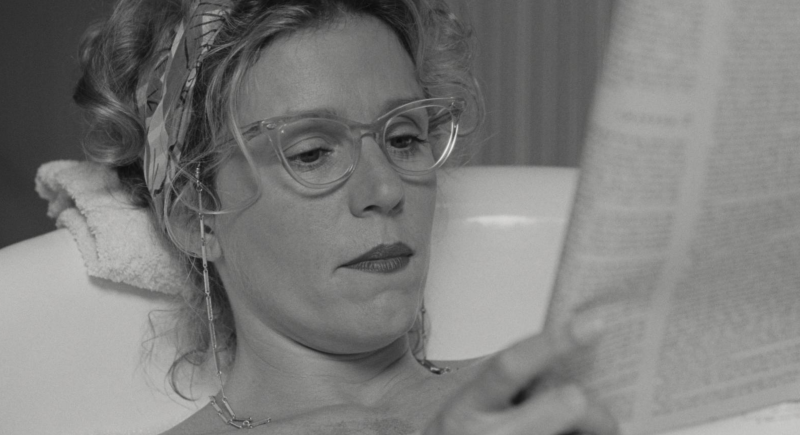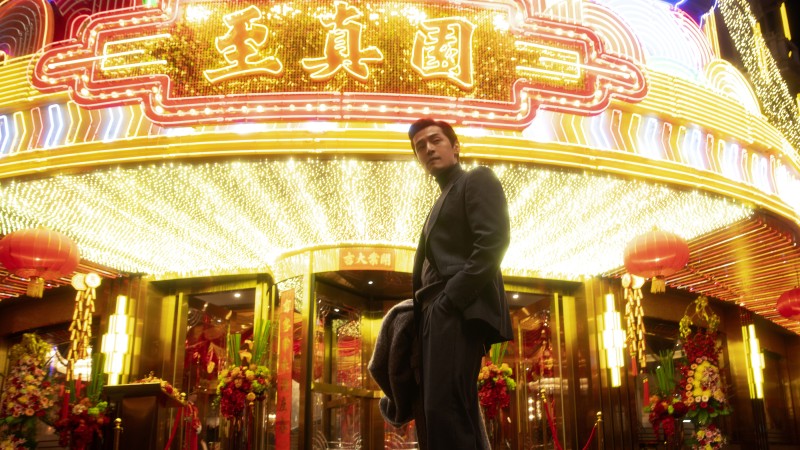Most of her essay collections are object collections: she picks a thing up, beckons you to come closer, and talks around it.Quickly, you get the sense that speaking through objects allows her to touch on difficult topics—like a lifetime of celebrity, or a relationship with a tough, “parasitic” adopted mother—without committing to revealing some stable whole of a self. The shape of a heeled shoe leads to an observation of how oddly she and some Japanese women walk (“to think we’ve only been wearing shoes for a hundred years”); a heavy golden comb given to Takamine by Kinuyo Tanaka, and later gifted to Haruko Sugimura, evokes afternoons growing up alongside the older actress, trying on her sweaters and jewelry, learning the looks of a hundred different women (“You act differently, with that weight in your hair. A line of busy Japanese actresses, connected by just a little comb”). As I read, I wonder where she learned to slant herself this way, to communicate only via the patina of things. As one online reviewer put it: “It all should sound like a brag parade. But it doesn’t. How does she do it? I want to know.”
How does she do it? This is the reaction we have when watching Takamine in Naruse’s When a Woman Ascends the Stairs, probably because the question is shared by all of the other characters. Takamine is Keiko, a popular bar hostess in Ginza approaching the modern courtesan’s expiration age of thirty. Men appear in front of her as damp, whiskey-scented tarot cards, each with a possible future: marriage, passion, her own club. Other hostesses look at her, feeling themselves to be awkward and slow, while other men draw close to sniff. Playing bus conductresses, secretaries, dress-sellers, housewives, and former geishas for Naruse, Takamine embodied characters who must summon alternate worlds around themselves with every tone, every gesture, obeying and exemplifying a certain code of conduct—all the while knowing that a single slip would make them plummet in value. In Naruse’s films, escaping poverty means having to transform yourself to cater to men. Naruse and Takamine never allow you to forget the cost of this ascension.
You watch Takamine, and at first you are seduced. Look how beautiful she is, you think, so alive, so luminous. Then you see her hunch over a calculator and her accounting book, checking to see what will be left over when her debts are paid. She flicks an abacus: what remains? What distinguishes her from the others in the film—“she’s different,” a minor character always says, with a note of awe—is not just how good she is at conjuring this other world but how she questions the terms of this differentiation. She wants her difference to mean something beyond a position in a hierarchy of pretty, pleasing things; she grasps at a life in which her stories are not simply currency to attract a man’s attention. That her efforts are ultimately futile, that the only thing lasting lies in recognizing this futility—this was Takamine’s terrain.
You can tell a Naruse frame from the clutter (there’s always a peeling photograph or newspaper on a wall or window), and he often cuts from the room to a close-up of an isolated object, then back again. This serves as a parallel for how Takamine’s protagonists are isolated from the coterie of other women, but the more interesting point about them is that the objects are always moving. The erotic charge of a kiss and the violence of a slap are displaced onto a glass bowl shattering against a window, or a cup rolling languorously on the floor. In other words, you see things that, in their movement, resist being just another thing.
Enter Takamine’s feet. Nineteen years before Takamine ascended the stairs as Keiko, she was Hideko in Naruse’s Hideko the Bus Conductor, which featured her and other women’s feet in close-up—from the ankles down, dancing in geta sandals—a whopping four times within the span of a fifty-four-minute film. In it, Takamine is a conductress for a failing bus company in a rural area who thinks up a plan to save it: she scripts her narration of the ride, introducing the audience to all of the sights, like the fancy bus rides in Tokyo. She works hard, practicing alone in her room to nail the perfect pitch of the conductress voice, the right gesture of the hand, only to give the performance once, on the bus’s final run. The cuts to the bare feet—inexplicable, at first—over the course of the film point to a part of the body that often doesn’t get to perform in front of a camera, and that isn’t accountable to standards of perfection.
In When a Woman Ascends the Stairs, one key movement is similarly repeated four times: Takamine ascending the stairs to get to her bar. The first time she does this, she tells us on the voice-over: “I hated climbing these stairs more than anything. But once I was up, I would take each day as it came.” Each time we see the same formula: Keiko approaches the stairs, her full body shown from the top. She then starts to climb. Naruse cuts to a close-up of her feet, followed by a shot of Keiko taken from the bottom as she enters the bar. The repetition of this sequence of movements gives it the feeling of a treadmill: a woman laboring to stay in the same place.
But there are important variations of this motif. The first time, Keiko pauses at the bottom of the stairs, and we can see her whole body; she draws her arms together a little tighter, takes a breath, and starts climbing. On the second ascent, her foot lingers on a step and hovers, almost still. “What should I do?” she says on the voice-over. Then—and I’m stunned here, every time, at Takamine’s subtle timing and the extraordinary editing—we cut to the next step, the shot of Keiko from the bottom. The momentum of the cut seems to push her up the stairs, almost as though the camera had nudged her forward. The camera remains below, not following her up. We see her move away from us, growing smaller as she ascends.
By the end of the film, after three iterations of this sequence, we look forward to seeing the close-up of Keiko’s brisk, little feet that serves as its central element. But in the fourth ascent, as Takamine tells us “I must continue to live” on the voice-over, we are denied it. At a distance, we see her climbing the stairs from the front, then from the back. The close-up on pausing feet that typically links these shots is subtracted, generating the bleakness characteristic of the Naruse-Takamine world.
It’s in that hesitation, eliminated from this final ascent, that we saw the potential of a self unburdened by cramped clutter and commercialized glamour. In that in-between moment, Keiko could think about crossing a line without actually crossing it. “If I let go once,” she says with a smile to a younger hostess at one point in the film, “it’d be too hard to stop. But maybe I’m just a coward.” Naruse imbues the almost-stillness of Takamine’s slight pause with this idea of letting go of control, but we only realize its significance once it’s no longer there. Only we would remember the possibilities that hesitation conveyed. We balance the books and leave Takamine, wondering what she is left with as she continues to live.





